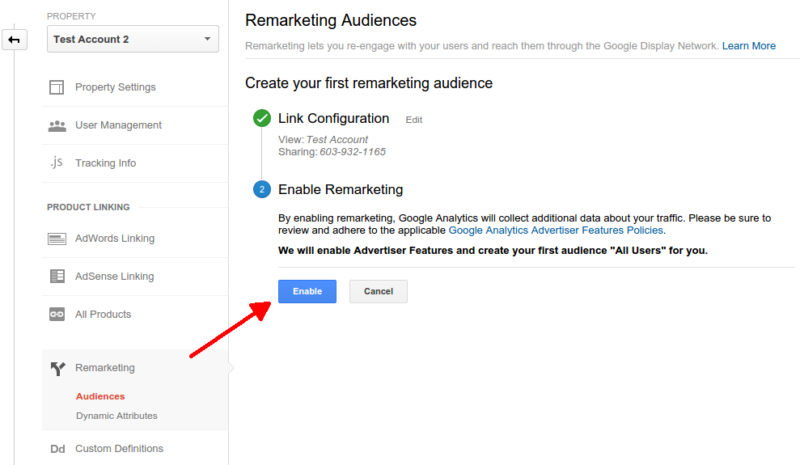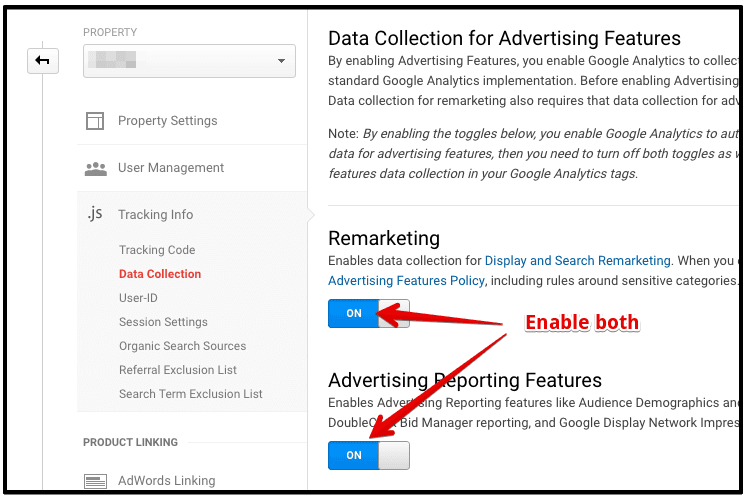The Benefits of Using Remarketing In Google Analytics
The Benefits of Using Remarketing In Google Analytics
Blog Article
Using Remarketing in Google Analytics: A Comprehensive Overview
Taking advantage of remarketing in Google Analytics supplies businesses a strategic edge in reaching out to prospective consumers. This guide will certainly shed light on the important actions involved in taking advantage of the complete possibility of remarketing in Google Analytics, leading to enhanced marketing outcomes.
Recognizing Remarketing in Google Analytics
Remarketing in Google Analytics enables companies to tactically target individuals who have actually formerly engaged with their website or mobile app. By leveraging information from Google Analytics, companies can create personalized remarketing lists based upon user habits, such as web pages gone to, activities taken, or particular objectives accomplished. This powerful device allows businesses to re-engage with users that have actually shown interest in their solutions or items, ultimately increasing the possibility of conversion.
Recognizing the various kinds of remarketing techniques is critical for an effective project - What Is “Remarketing” In Google Analytics?. Google Analytics offers different choices, consisting of typical remarketing, dynamic remarketing, and remarketing listings for search ads (RLSA) Each type offers a special purpose and can be customized to meet particular advertising and marketing objectives
Additionally, examining the efficiency of remarketing projects is essential for optimizing results. Google Analytics provides important insights into the efficiency of various remarketing approaches, permitting companies to make data-driven decisions and refine their targeting method. By continually changing and keeping an eye on remarketing initiatives based upon analytics information, businesses can make best use of ROI and drive success in their advertising and marketing initiatives.
Establishing Remarketing Campaigns

After establishing up target market lists, the following step is to link Google Analytics with Google Advertisements. By linking these two systems, services can effortlessly transfer audience lists from Google Analytics to Google Advertisements for remarketing functions. This combination permits more specific targeting and better campaign efficiency.
When the accounts are connected, companies can develop remarketing projects in Google Advertisements making use of the target market notes formerly defined in Google Analytics. These campaigns can be tailored with details advertisement creatives, messaging, and bidding methods to properly re-engage with past site visitors and drive conversions. By complying with these actions, services can utilize the power of remarketing to improve their marketing efforts and boost ROI.
Using Target Market Division Approaches

Predefined sections in Google Analytics permit you to swiftly assess common target market categories fresh individuals, returning users, or customers who finished a particular goal on your website. Customized sections, on the other hand, allow you to create one-of-a-kind sections based upon specific criteria that are necessary to your organization objectives. Dynamic remarketing checklists automatically readjust based on individual actions, showing individualized advertisements to customers that have engaged with your website specifically means.
Analyzing Remarketing Efficiency Metrics
Upon assessing the effectiveness of remarketing campaigns in Google Analytics, the analysis of key efficiency metrics offers valuable insights into target market interaction and conversion prices. By delving into metrics such as click-through prices (CTR), conversion prices, expense per acquisition (CERTIFIED PUBLIC ACCOUNTANT), and return on advertisement invest (ROAS), marketing professionals can assess the success of their remarketing efforts. Evaluating these metrics enables marketers to enhance projects, improve audience targeting, and designate budget plans efficiently to enhance total remarketing efficiency.
Optimizing Remarketing Strategies
When refining remarketing find this approaches in Google Analytics, concentrating on audience segmentation is extremely important for accomplishing campaign success. By dividing your audience into specific sections based on their actions, demographics, or you could try here rate of interests, you can tailor your advertisements a lot more efficiently per group. This targeted method enhances the chance of engaging customers who have currently shown passion in your services or products, causing higher conversion rates.
One more vital facet of optimizing remarketing techniques is constantly screening and refining your projects (What Is “Remarketing” In Google Analytics?). A/B screening different advertisement creatives, messaging, or deals can aid you identify what resonates best with your target market and drives one of the most conversions. By assessing the efficiency of these tests in Google resource Analytics, you can make data-driven decisions to maximize your remarketing efforts additionally
Furthermore, leveraging vibrant remarketing can significantly improve your project results. This feature allows you to show individualized ads to individuals based on their previous communications with your web site, showcasing services or products they have actually formerly seen. By providing customized content to individuals based upon their interests and habits, vibrant remarketing can aid enhance interaction and drive conversions.
Verdict
Finally, utilizing remarketing in Google Analytics is a calculated method to target users who have formerly involved with an internet site. By developing customized audience listings and using audience division techniques, organizations can enhance remarketing campaigns for increased conversion rates. Examining efficiency metrics and continually enhancing approaches are crucial for optimizing the performance of remarketing initiatives.
Google Analytics offers numerous choices, including conventional remarketing, dynamic remarketing, and remarketing listings for search ads (RLSA)After setting up audience lists, the following action is to connect Google Analytics with Google Ads. By connecting these 2 systems, organizations can flawlessly move target market listings from Google Analytics to Google Advertisements for remarketing functions.Once the accounts are connected, organizations can develop remarketing campaigns in Google Ads utilizing the target market notes previously specified in Google Analytics.When refining remarketing strategies in Google Analytics, concentrating on audience segmentation is paramount for attaining project success.
Report this page